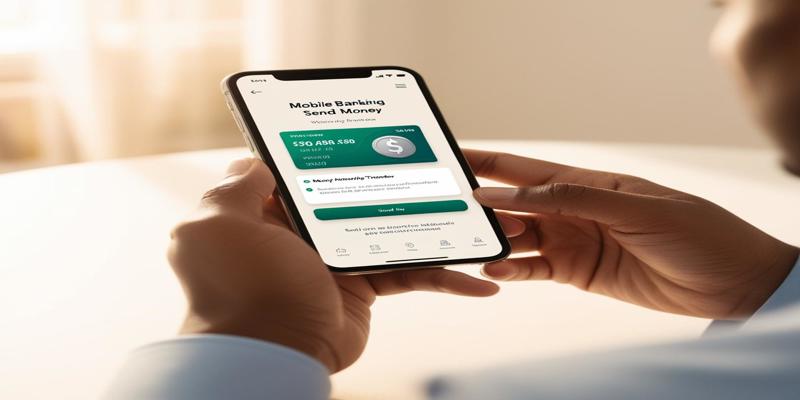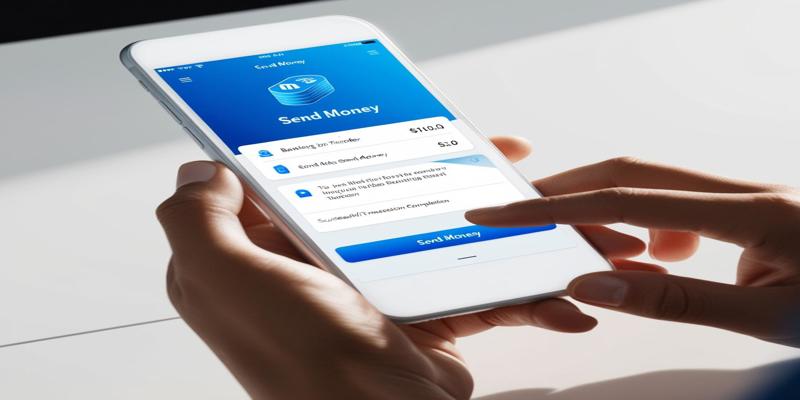Mobile Device Money Transfer Services Online
Dec 11, 2024 By Verna Wesley
We seek convenient ways to send and receive money using your smartphone. Mobile money transfer services revolutionized the way we manage finances on the go. From peer-to-peer payments to international remittances, these platforms will provide safe, quick, and user-friendly solutions to transfer funds within a few taps.
Key Players in Online Money Transfer for Mobile

Industry Giants
A few large players prevail in the mobile money transfer environment. PayPal is one of the first online payment services that allows flexible payments; the same company owns Venmo, the popular peer-to-peer platform projected to attain over 100 million users by 2024. Zelle is backed by major U.S. banks for fast bank-to-bank transfers and is projected to handle $500.82 billion in transactions by the end of 2022.
Rising Stars
Cash App, owned by Square, continues to see colossal momentum and growth. It is estimated to top over $200 billion in transaction volume by 2025. Apple Pay and Google Pay lean on their respective vast ecosystems to provide frictionless mobile payment experiences; an estimated 1.4 billion iPhone users exist worldwide for Apple Pay.
International Contenders
Remitly is particularly dominant in cross-border transfers, facilitating safe money transfers to over 170 countries worldwide. WorldRemit expanded its online money transfer services from South Africa to over 145 regions worldwide for international transfers at relatively affordable costs. These platforms are taking advantage of a steadily globalized digital remittance market projected to surpass US$198 billion by 2032.
How Online Money Transfers Work on Mobile
The Basics of Mobile Money Transfers
Mobile money transfers online have changed the way people send and receive money. These services allow for the electronic transfer of cash from one account to another via a phone or tablet without the need to carry any paper cash or a check. Popular services include PayPal and Venmo; even mobile banking apps now allow users to send money to their friends, relatives, or any other institution quickly and easily.
The Transfer Process
The sending process involves connecting a funding source to the mobile application. Once this is done, customers can initiate transfers by selecting a recipient and entering the amount to be sent. Transfers can be executed through text messages with embedded payment commands or by directly interacting with the mobile banking application. The money is then electronically transferred from the sender's account to the recipient's account within minutes.
Security Measures
These transactions have been made safe by ensuring multi-layerings of data encryption. The data is encoded when it travels through the internet and decoded; thus, there is protection for sensitive financial information. Moreover, most applications today add to the security with features like biometric authentication, two-factor authentication, and real-time in-app notifications to further protect users' accounts and transactions.
Security of Mobile Money Transfers

Advanced Security Technologies
For mobile money transfers, security comes first. Modern mobile payment systems incorporate the most sophisticated technologies against any theft of your financial information. Such technologies include encryption, which protects your data with secret keys, and tokenization, which replaces sensitive card details with secure tokens. Moreover, 2FA requires verification of two forms of identification before account access is provided.
Potential Risks and Mitigation Strategies
Still, despite all these strong security measures, there are several risks. One of the greatest dangers today is phishing scams, wherein hackers fool people into divulging vital information. Vigilance over which links to click and which apps to download can reduce this. The other threat is using open public Wi-Fi networks that cybercriminals may compromise. You can contemplate implementing a Virtual Private Network to secure transactions on public networks.
Best Practices for Secure Transfers
To keep your mobile money transfers safe, follow the best practices given below:
- Download bank-related applications from the source only.
- Use different strong passwords for each financial account.
- Keep the operating system of the mobile device and applications updated.
- Set alerts to monitor all the account activities.
- Avoid performing any financial transaction using public Wi-Fi.
Top Features of Mobile Money Transfer Apps
Secure Authentication and User Profiles
Security has always been a big concern in mobile money transfer applications. Nowadays, most applications offer other biometric sign-in options, like fingerprint or face identification, which means security and convenience. Profiles let you easily manage your personal and payment details for easy transfers.
Seamless Bank Account Integration
Popular money transfer apps often allow users to add several bank accounts and cards. This integration allows for easy funds transfer between accounts and managing finances across multiple institutions.
Advanced E-Wallet Functionality
Many applications now have an inbuilt e-wallet feature where one can store and manage funds within the application. Such functionality is usually extended further for contactless payment, using your smartphone for purchases in stores without any need for physical cards.
Real-Time Notifications and Transaction Tracking
Receive real-time notifications of transfers, deposits, and withdrawals to stay updated with your financial activities. Full transaction histories allow you to monitor your expenditures and make it easy to reconcile your accounts.
FAQs on Mobile Money Transfers
What is mobile money, and how does it work?
Mobile money is a type of e-wallet service. Users can store, send, and receive money with their mobile phones. It's also an alternative to traditional bank accounts in areas where the banking structure may be thin. With mobile money, subscribers can purchase items, pay bills, pay school fees, and top up mobile airtime. They can also withdraw physical cash from authorized agents.
How secure are mobile money transfers?
Overall, mobile money accounts are secure, as they fall under local financial regulations, and most transactions are identified and PIN-verified. Even if the phone or SIM card is stolen, funds remain safe. As an example, T-Mobile MONEY can make instant payments to friends and Shared Savings accounts while having robust security.
Are there limits on mobile money transfers?
Yes, most services have a limit on transactions. For example, T-Mobile MONEY has set daily and monthly limits at $500 and $5,000 for instant payments to friends. Sometimes, it is best to confirm your transaction limit with the provider.
Conclusion
As mobile technology continues evolving, online money transfer services for smartphones and tablets provide unparalleled convenience and accessibility. With these powerful tools at your fingertips, you can manage your finances seamlessly, send funds to friends and family, and conduct business transactions anywhere an internet connection allows.








